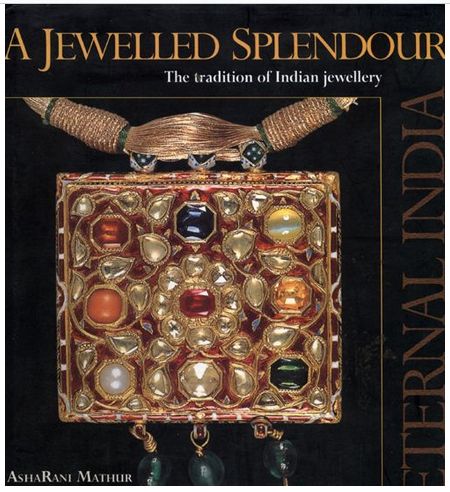AsharanA Jewelled Splendour: The Tradition of Indian Jewellery
i Mathur
Mathur, Asharani;
A Jewelled Splendour: The Tradition of Indian Jewellery
Rupa Publications, 2002, 96 pages [gbook]
ISBN 8171679749, 9788171679744
topics: | india | jewellery |

A history of Jewellery in India. India has been one of the prime sources of jewellery for much of history. For 3000 years, India was the only known source of diamonds. An ancient poet says: It is the jewels that are bedecked by women Not women who are beautified by them: A woman unbejewelled will still enrapture, But who looks twice at any girl-less gem? - from Sharangadhara-paddhati, tr. probably John Brough [the text argues with the above poet, saying that even when girl-less, gems hold considerable interest. ] Covers both the royal and also the plebeian ornaments. A rare glimpse into a world not much touched in today's discourse.Other Jewelry
Harappan necklace, ca. 3000 BC, with a styling that remains amazingly contemporary! Steatite and gold beads with pendants of banded agate and jade.
Tin-maNiyA (three gems) pendant, Jaipur The broad, flat pendant bears parrot and moon motifs. Fine filigree work.
Graeco-Indian necklace from Taxila, 1st cent. AD. Turquoise and garnets. The filigree work of Taxila and the granulation became justifiably famous.
anklet (paizeb) from rajasthan, 19th c.
Silver Hansuli, from the Lambadi tribe of Andhra Pradesh. The hansuli is a sign of marriage - the triangular danglers indicate that she has borne sons.
author bio
Asha Rani Mathur is a freelance writer and editor. She has edited and produced many books on Indian life and culture.
bookexcerptise is maintained by a small group of editors. get in touch with us! bookexcerptise [at] gmail [dot] .com. This review by Amit Mukerjee was last updated on : 2015 Apr 27